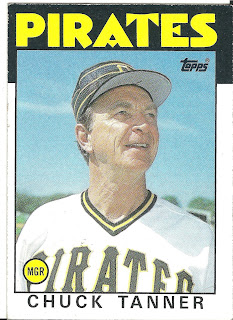Card
thoughts: Here’s Lee Smith, in all his tall-man
glory. When I look at this card, I smile inwardly and think of all the joy I
had as a youth, watching Smith dominate in the late innings.
The
player: One the most dominant closers of his era,
Smith should be in the Hall of Fame. He
was also involved in one of the worst Cubs’ trades of all time.
Originally a starter in the minors, Smith was
struggling with an ERA over 6 when his manager at Midland moved him to the
bullpen. In that era, a bullpen gig was seen as a demotion, with little future.
Disappointed, Smith briefly quit and played college basketball. But at the request
of Hall of Famer Billy Williams, he accepted his role, and was called up at the
end of 1980.
In 1981, Smith was on the team for good, but veteran
Dick Tidrow was the closer. So he pitched mostly in middle relief, with a
league average ERA. With Tidrow's move to middle relief in '82, Smith became the closer, and would remain a closer the
rest of his big league career where owed most of his early success to Fergie Jenkins, who taught him the forkball and how to better use his
slider.
His first big season as a closer was in 1983, when
he led the league with 29 saves and had a 1.65 ERA, which turned out to be the lowest ERA in his entire career. He was named to the all star team, but got
hit hard by the Americans. In the eighth inning, Smith gave up two runs, one earned.
In the next three seasons, Smith saved 30 games each
year. Highlights during this stretch include recording one save and one loss in
the 1984 ALCS, and pitching in the 1987 All Star Game, in which he earned the win
by pitching 3 scoreless innings.
Despite Smith’s success, the Cubs felt he was
getting too fat, and that was putting too much pressure on his knees. I think
they believed Smith was a year away from being washed up and didn’t value a
consistent closer like they should’ve. So GM #231 Jim Frey, in his infinite wisdom, sent Smith
to the Red Sox for #210 Calvin Schiraldi (who Frey hilariously compared to a
young Lee Smith) and #181 Al Nipper. I still remember how angry I was at this
trade. Very soon, I was proved correct.
Far from being washed up, Smith would pitch another
decade and rack up another 300 saves.
With the Red Sox, Smith was not as dominant as with the Cubs, but he did
save 58 games over three seasons. But the Red Sox, like the Cubs, became
convinced that Smith’s ballooning weight would lead to injury, so they dealt
him in 1990 to the Cardinals for Tom Brunansky. The move back to the NL
reinvigorated Smith, and he led the league in saves in 1991 (47) and 1992 (43).
In the former year, he was second in Cy Young award voting.
Although Smith had saved 43 games again for the
Cardinals in 1993 (which made him the all-time saves leader), they were well
out of the division race and his ERA was 4.50. So, he was sent to the Yankees
for almost nothing. His entire Yankee career lasted eight games before he
became a free agent. Smith signed with Baltimore, where he led the league in
saves again (33), and pitched in his last all star game (he gave up a game-tying two
run double to Fred McGriff).
At 37, Smith signed with the Angels where he saved
the same number of games as years he had lived. But that would be his last year
as a dominant closer, as his knees finally gave out. Short stints with the Reds
and Expos ended his career.
When he retired, Smith was the all-time saves leader
who, it could be argued, was the best reliever for much of his era Although he has
gotten about 50% of the vote each time he’s up for the Hall of Fame, the Hall
consistently undervalues the closer (only Dennis Eckersley, Hoyt Wilhelm, Bruce Sutter,
Rich Gossage and #185 Rollie Fingers are in.) Smith’s career is
certainly on par with theirs.
Smith coached the South African national baseball
team in 2006, and is the minor league roving pitching instructor for the
Giants.
Rear guard: Here's Smith's first Topps card. He looks pensive.
The "Talkin Baseball" items for long running franchises are fun, because it is almost always some player you've never heard of. There's actually a card of Mertes, where he looks a bit like actor Ed Helms. Nicknamed "Sandow", Sam's home runs were likely of the inside-the-park variety, Mertes actually had good power for the time, with a career slugging percentage just a tick below .400.
In 1900, Mertes hit 7 homes and drove in 60 runs while stealing 38 bases. He was a greater success with the New York Giants, where he twice drove in over 100 runs.









